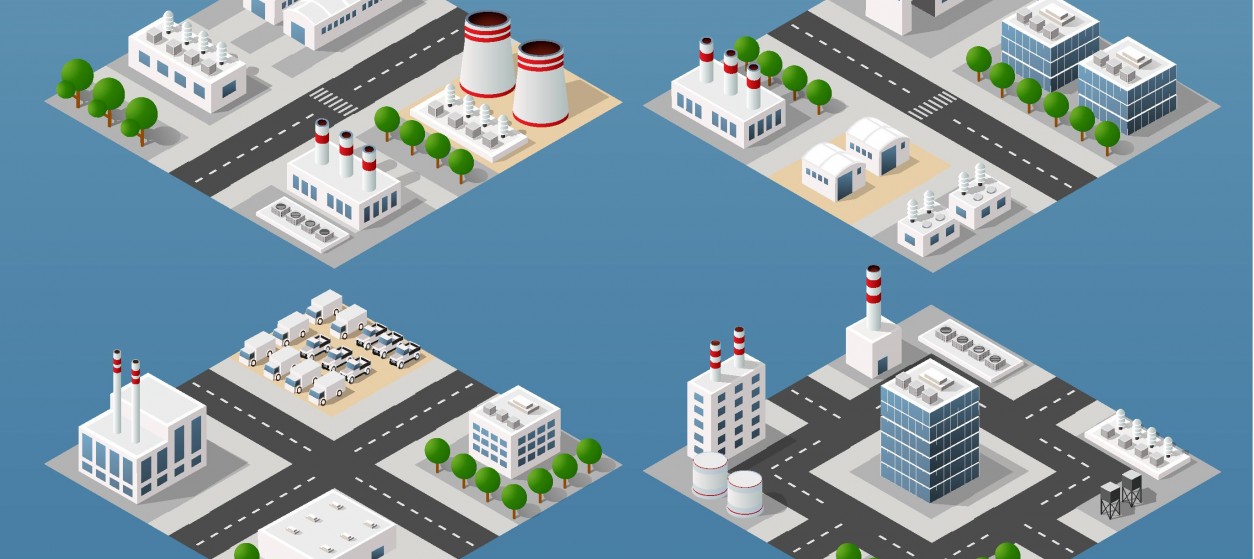For nearly three decades most organizations around the globe have been deploying a host of IT systems as a means of improving their business operations. These systems range from the ubiquitous mail servers and enterprise applications (e.g., Enterprise Resource Planning (ERP) systems, Finance and Accounting systems, Human Resources Management Systems (HRMS), Production Control Systems) to very specialized systems for specific industries such as Energy Market Management Systems for the energy sector and Clinical Trials Management System (CTMS) for healthcare. In most cases the procurement and deployment of these IT platforms have been performed in an ad-hoc manner, either due to the need of fulfilling pressing business needs at given times or in order to keep up with the evolution of technology and regulations. As a result, most enterprises are nowadays faced with a great deal of systems which work in silos and rather messy IT architectures. These have become common sources of inefficiencies in business operations and also high-costs for maintenance and evolution.
As a result, organizations are striving to combine legacy systems in novel integrated platforms, which boost their flexibility and agility in an era of continuous change. This is sometimes coined as an “IT Singularity” discipline, which promises to increase the efficiency of both large organizations and SMBs (Small Medium Businesses). In practice organizations are making good progress in integrating enterprise applications, but they lag behind in terms of integration of other systems. It’s therefore important for managers and architects to understand the merits of Singularity, in order to start their respective projects on the right foot.
Understanding Silos and Fragmentation
Systems working in isolation have several adverse implications, as they are associated with fragmentation of data, processes and technologies:
- Data fragmentation: When systems are not integrated, critical business data tends to be fragmented across different systems, which makes it very difficult to aggregate and process it for knowledge discovery. This is a serious set-back in the era of BigData, where technology provides the means for collecting, storing and processing arbitrarily large data volumes.
- Process and functionalities fragmentation: Process “silos” can be detrimental for modern organizations, as they lead to manual processes and inconsistencies in data and operations. As a prominent example, IT and field systems in plants are not typically streamlined, which makes it difficult and time consuming to introduce changes on the plant floor. As another example, CRM systems and customer databases are not always integrated with field marketing and sales systems, which causes a significant set-back to the productivity of marketing agents and salesforce personnel.
- Technological fragmentation: Enterprise IT systems are typically based on heterogeneous platforms and provided/supported by different vendors. Hence organizations have to work with multiple technological platforms, which increases the costs of the IT department, including costs for maintenance, integration and cyber-security.
The Merits of Singularity
Integrating and reducing fragmentation can lead to tangible business benefits such as:
- Agility and flexibility: The integration of systems and processes leads to more responsive and agile enterprises, which are able to respond to customer demand and other changes from the external environment. The reason being that systems that receive external stakeholders’ feedback (e.g., new orders, field events, changes in scheduled activities) are fully integrated with internal systems that will process this feedback. Likewise, enterprises are offered with increased flexibility in changing processes, as the integrated systems provide access to all of the needed data and workflows.
- Business & IT Alignment: IT Singularity enables better alignment of IT processes with business processes. Indeed, in several cases business processes transcend multiple departments or business units in an organization, which are served by different IT systems. By streamlining these IT systems, organizations are able to align them to the operation of the business processes.
- Single Technology Platform: The Singularity paradigm also alleviates technological heterogeneity, which simplifies IT management and maintenance processes, while reducing the respective costs.
- Uniform Organization: An integrated IT infrastructure is a foundation for a uniform organization, which enables all stakeholders to obtain organization-wide information for their decision-making. The latter is extremely important for middle managers, senior managers and C-level executives.
- Economies of Scale: Considering the IT infrastructure used to support an integrated platform, the singularity approach can also enable economies of scale. The latter stem from the ability to consolidate IT procurements.
Practical Examples: Sectors and Applications
The value of integrating applications is already evident in a number of “cross-cutting” applications that are commonly deployed by different types of organizations:
- Enterprise Application and Enterprise Resource Planning: Enterprise processes are typically integrated and are likely to exploit data and processes from IT systems in different departments. Most organizations are therefore deploying integrated enterprise applications either based on an ERP platform or through the best-of-breed integration of legacy IT systems from different departments.
- Customer Relationship Management (CRM): CRM systems enable thousands of organizations worldwide to support customer centric processes. To this end, CRM systems provide a consolidated view of the customer, based on the integration of customer data from many different sources and customer interaction channels (touch points).
- Supply Chain Management (SCM): Organizations are increasingly integrating their enterprise systems with the systems of supply chain partners in order to streamline supply chain interactions between manufacturers, logistics companies, retailers and customers.
The CRM, SCM and ERP examples are widely used regardless of company size and industry. However, the singularity concept is also relevant to the integration of sector specific IT systems. Some prominent examples can be found in the following sectors:
- Energy: Energy companies are increasingly striving to integrate energy production, energy management and market management applications. This integration can make them more responsive, through enabling them to balance supply and demand, while driving market operations based on actual (rather than estimated) energy production.
- Manufacturing: Manufacturing companies are in most cases deploying integrated SCM systems in their manufacturing chains. However, they are also trying to augment these system based on information from equipment maintenance operations, asset management systems, factory automation systems and more. This enhanced integration enables them to make their production extremely flexible and responsive to changes in the external environment (e.g., delays in delivery of materials and machine failures).
- Financial Services and Banking: Financial organizations are driving the integration of their systems at the next level, as they try to provide their customers with visibility to the full range of their portfolios, through e-banking and mobile banking services. The latter is key to responding to the mobile-first trends, which are nowadays at the very core of the financial institutions’ business strategies.
- Healthcare: IT Integration in healthcare has traditionally focused on the development of integrated health information systems, clinical trials systems and hospital information systems including their interactions with ERPs. With the advent of smartphones, wearables, smart pills and other devices, there are more challenges being face for achieving singularity. These challenges include, for example, the collection and sharing of data about patients, as a means of supporting personalized treatments, extracting medical knowledge and increasing the credibility of clinical research.
Singularity Strategy
Given the importance of integrating the wealth of enterprise systems and data sources, organizations should embrace singularity as part of their business strategy. This involves exploring the right technologies and vendors, but also deciding the best approach for a smooth migration plan from the world of “silos” to the era of singularity. Another success factor is the ever important commitment and engagement of the senior management of the enterprise, which is a key to facing- reluctance to change and barriers stemming from internal policies. Likewise, involvement of key users and education of employees is an important function that can determine success of this move. Finally, organizations should bear in mind that singularity is a long-term strategic target, rather than an ad-hoc (on-off) project and for all the hard work it requires it also promises substantial long term benefits.










